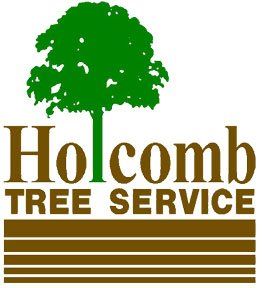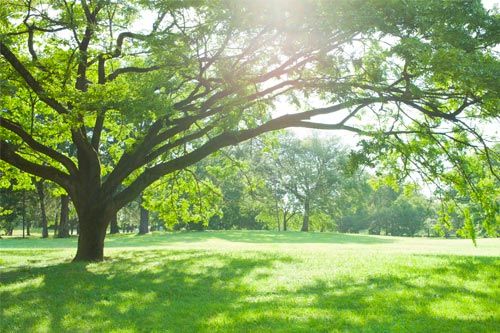THE HOMEOWNERS' GUIDE TO INSPECTING AND CARING FOR TREES AFTER A MAJOR STORM
- By Holcomb Tree Service
- •
- 29 Nov, 2018
- •

LOOK FOR CRACKED AND BROKEN BRANCHES
Take a few minutes to stand at the base of each tree and look upward into its branches. If you cannot get a clear view of the major branches from the ground, you may even want to climb up a step ladder to get a better look. If you notice any branches that are cracked or that have broken away completely, it's time to give your tree care service a call.
Cracked branches are always at risk of breaking completely if you do not have them repaired or removed promptly. Your tree care company may be able to use brackets and wires to "repair" the crack and encourage the tree to heal, but this has to be done quickly. Subsequent winds may deepen the crack to the point that it can't be repaired, and fungi love to invade trees through cracks which can lead to disease.
Even if a branch has broken off completely, it is a good idea to have your arborist tidy it up. They can remove the rest of the damaged branch or smooth out the "wound" so the tree has an easier time healing.
SWEEP UP FALLEN DEBRIS
ASSESS FOR FLOODING, AND TAKE DRAINAGE MEASURES IF NEEDED
It's normal for the ground to be a bit soggy after a storm, and most trees can tolerate occasionally soggy soil. However, if poor drainage has caused water to puddle and pool deeply around your tree, your tree's roots may be at risk of drowning. Part of the root system may die, inhibiting the tree's future ability to obtain water and nutrients from the ground.
If there is a flooded area around your tree, you may want to dig a temporary ditch to encourage better drainage. If you notice that the area frequently becomes flooded after storms, consider having a landscaping company come adjust the soil grade or add a drainage tile to prevent water from accumulating in the area so readily.
REPLACE ERODED, WASHED-AWAY MULCH
Spreading mulch around trees can help insulate the soil, keep roots moist during dry periods, and add organic matter back to the soil. However, a violent storm can easily rinse mulch away. If the mulch around your trees appears to be disturbed, wait until the soil dries out a little, and then apply a new layer of mulch.
Ideally, you should apply about three to four inches of mulch in a wide circle around the tree. (Aim for a circle diameter of about three feet.) Do not pile the mulch directly against the tree trunk. Pat the mulch down to gently compact it and help keep it from washing away in subsequent storms.
Trees are strong, hardy plants and they typically weather storms pretty well. However, it's always important to assess your tree for broken branches and other issues following a storm. If you do discover that your tree has been damaged, give Holcomb Tree Service a call to schedule a tree trimming appointment.
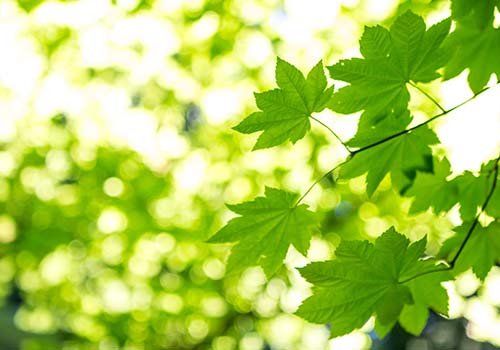

Healthy, appealing trees offer enormous benefits some of which may surprise you. Not only will trees in your landscape design improve curb appeal and increase your home's property value, but they can also aid in energy efficiency. While surprising to learn, trees that shade your home, windows and outdoor AC units can reduce cooling costs in the summer by 35%.
Planting young trees around your home will add curb appeal, but the lack of height and foliage will not help your heating and cooling costs. Therefore, you should plant attractive trees that will grow quickly, producing shade for energy conservation within a few years. This guide, and your contractor's help to maintain will help you know which attractive, fast-growing and shade-producing trees you should consider for your yard.
Crabapple Tree
One tree that adds color, texture and a great deal of shade, while also being easy to grow and maintain, is the Crabapple tree. The tree produces blooms of lush pink flowers in the spring and thick green foliage through the summer and fall. This foliage shades your home with ease.
Since the tree's branches grow up, instead of out, this tree is the perfect option for your home's exterior and outdoor AC units. Be sure to prune away dead flowers and limbs in the early part of winter to ensure new growth in the spring and summer.
River Birch Tree
The river birch is another fast-growing, shade-producing tree that will make a big impact on your landscape design and heating and cooling costs. This tree is also easy to grow, and survives in most soil conditions and requires very little water once established.
Also, the River Birch thrives in areas of your yard that receives full sun. Planting this tree close to a sunny outdoor living area will keep you and your guests under comfortable shade. In addition, planting these trees next to your home's exterior windows will help reduce cooling costs.
It is important to note that the River Birch is a massive tree. On average, it can grow up to 50 or 90 feet tall. Because of its height, avoid planting the tree near power lines.
To ensure the tree remains attractive and healthy, trim off dead foliage and fertilize in the fall.
Crepe Myrtle Tree
A Crepe Myrtle is definitely one of the easiest trees to grow since it does not require any special soil conditions and is heat and drought-tolerant. Its unique shape has been compared to a mushroom cloud. This tree has either a single trunk or a multitude of trunks that intertwine together.
You will love the floral blooms that occur at the end of spring and early summer. In most climates, the blooms will continue through the early part of fall as well. Available in a large variety of colors including white, pink, red and purple, the Crepe Myrtle tree adds appeal, shade and value to your home.
While easy to grow, the Crepe Myrtle does require a decent amount of maintenance to keep it healthy and attractive. To protect its shape, pruning off dying foliage and branches at the end of winter is important.
Flowering Dogwood
No matter which species you choose, a Flowering Dogwood is a great option for areas of your yard that receive full sun or partial shade.
In the fall season, trim away dead overgrowth and dying blooms before fertilizing. This will help the tree survive the harsh winter temperatures.
To learn more about planting and maintaining your fast-growing, shade-producing trees, contact the professionals at Holcomb Tree Service today.
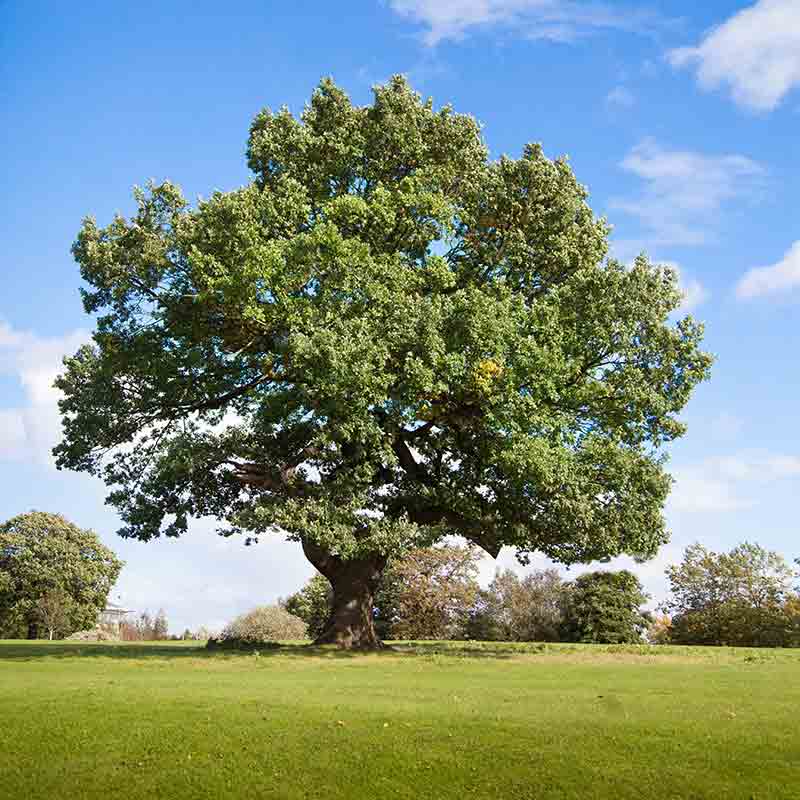
But, not all trees are equally valuable. By selecting species that will thrive and contribute to a home's environment, you may make your property much more appealing to buyers. These five steps will help you decide which new trees to plant near your home in Dallas, TX, and the surrounding areas.

Planting young trees around your home will add curb appeal, but the lack of height and foliage will not help your heating and cooling costs. Therefore, you should plant attractive trees that will grow quickly, producing shade for energy conservation within a few years. This guide, and your contractor's help to maintain, will help you know which attractive, fast-growing and shade-producing trees you should consider for your yard.
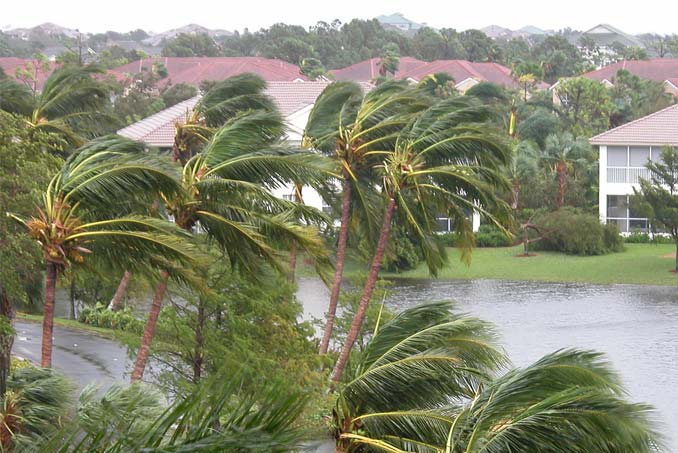

From energy efficiency and added curb appeal to an increase in your home's overall value, it is easy to see the benefits of healthy trees in your landscape design. Unfortunately, many homeowners do not fully understand how to care for their trees. While watering and even fertilizing may be priorities, protecting your trees from different diseases and pests is also important.
Development of Oak Wilt Disease
Once the fungus spreads to the tree's roots, oak wilt disease can be transmitted to other trees near or connected to the same root system.
